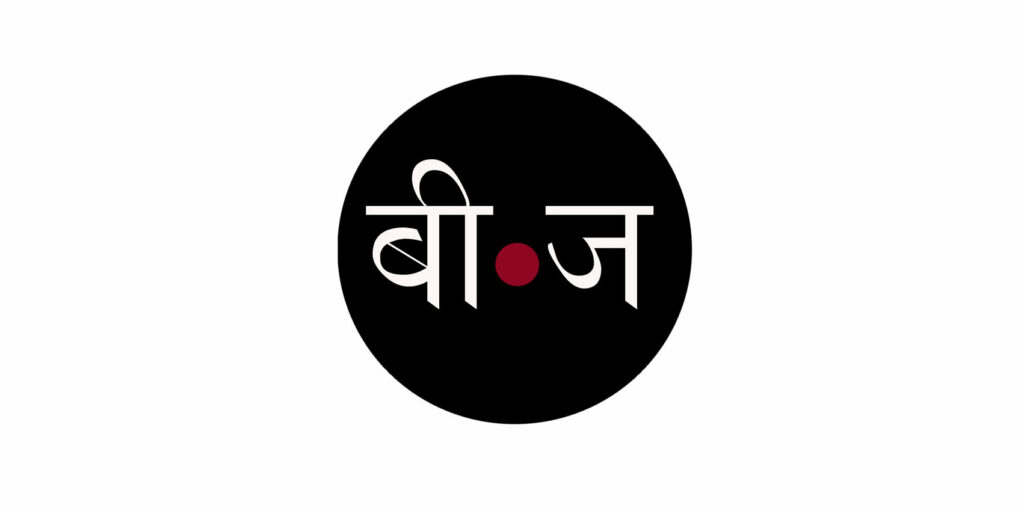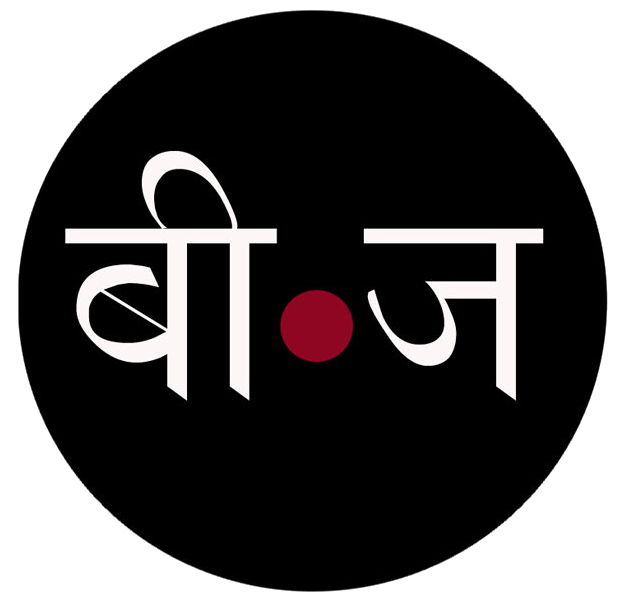Rolling out smokeless chulhas for Himalayan kitchens
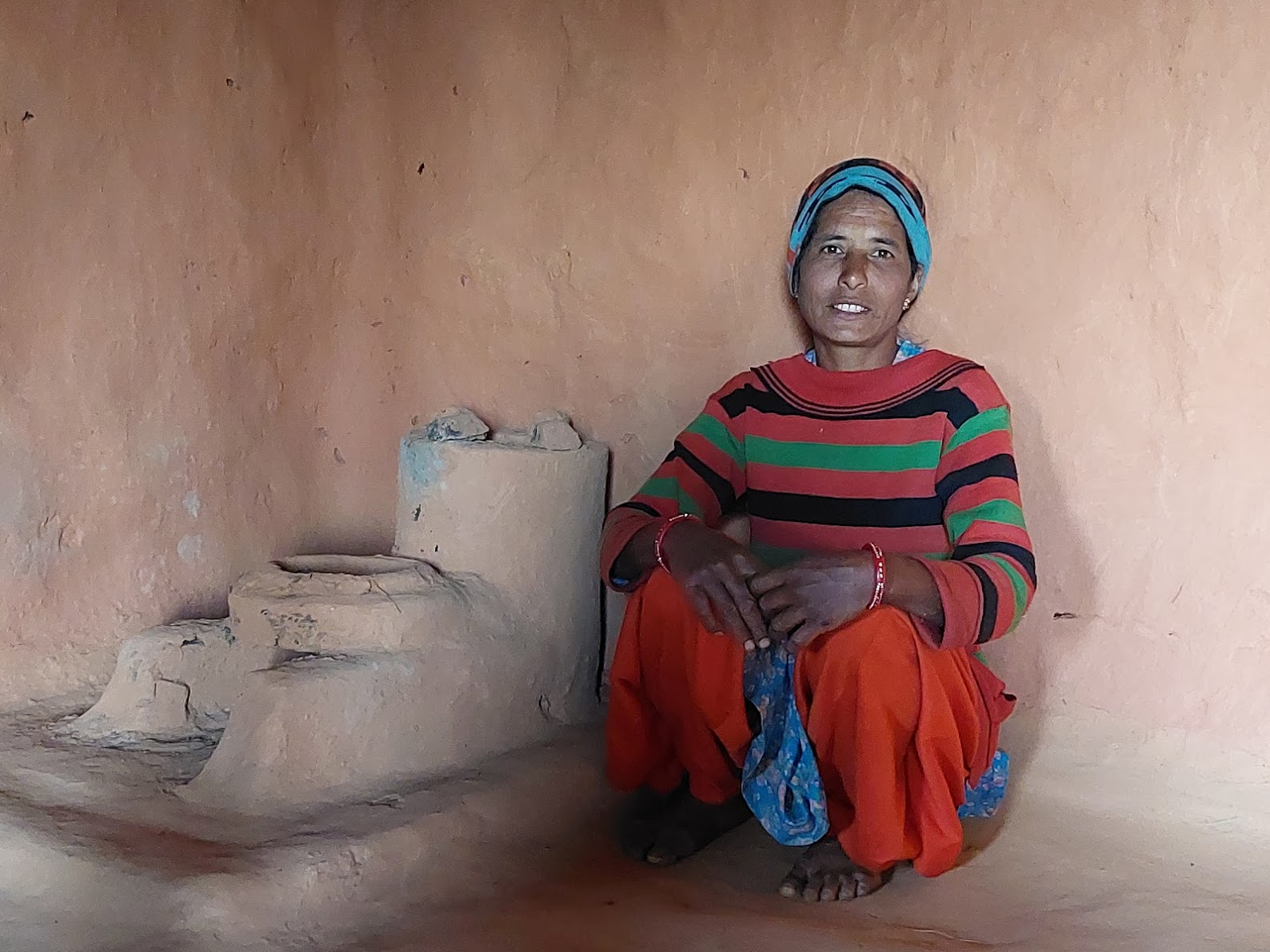
Girish Chanyal is Smokeless Cookstove Foundation’s Uttarakhand-based trainer who is a relentless community enabler who constructs smokeless chulhas. Nitisha Agrawal, the Founder & Director of the NGO SCF, traces Chanyal’s journey from gardener to trainer for BeejLiving
My eternal love affair with the Himalayas led me to have a profound attachment to hand-built, improved mud cookstoves based on Rocket Stove Technology. This inspired me to set up my non-profit, Smokeless Cookstove Foundation (SCF).
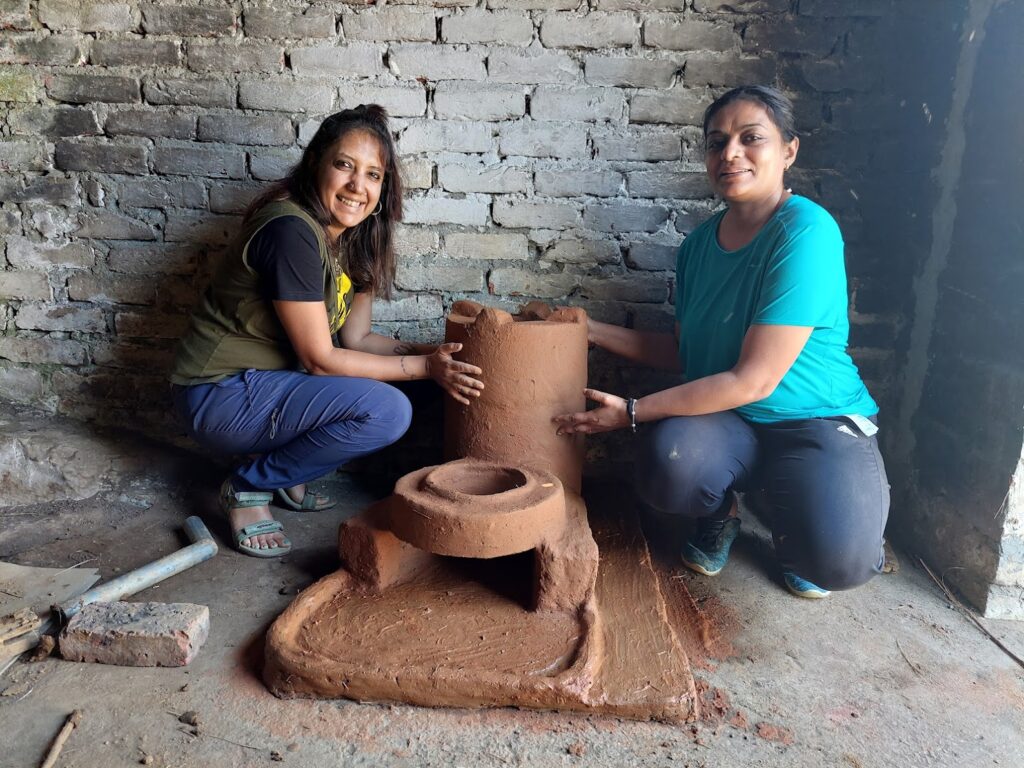
The tale of the traditional chulah
Uttarakhand sees temperature dipping to double digit minus, sometimes 4 to 5 months of the year. This leads to high use of fuel wood for mostly heating purposes (water boiling and space heating), sometimes up to 20 to 30 kgs in a day.
In rural Uttarakhand, like in most rural India, kitchens are small, mostly not ventilated and not well lit. This makes the task of cooking extremely treacherous, with severe health impacts resulting from inhaling toxic smoke. This smoke is because the rudimentary cookstoves are inefficient and most of the fire is wasted. It is actually extremely difficult for a city dweller to even think about spending five minutes inside a rural kitchen as our eyes would water, we would get headaches and feel short of breath almost immediately.
Women in rural India go through this experience for 2-3 hours daily. The sad part is, these women are not even aware of the health implications that the smoke has, carrying the burden on as their mother has and their daughters will. Adding to this is the pain of carrying 30 to 50 kgs of firewood on their head and shoulders from forests. In contrast, these improved mud stoves save almost 50% of firewood as compared to traditional cookstoves, and are virtually smokeless.
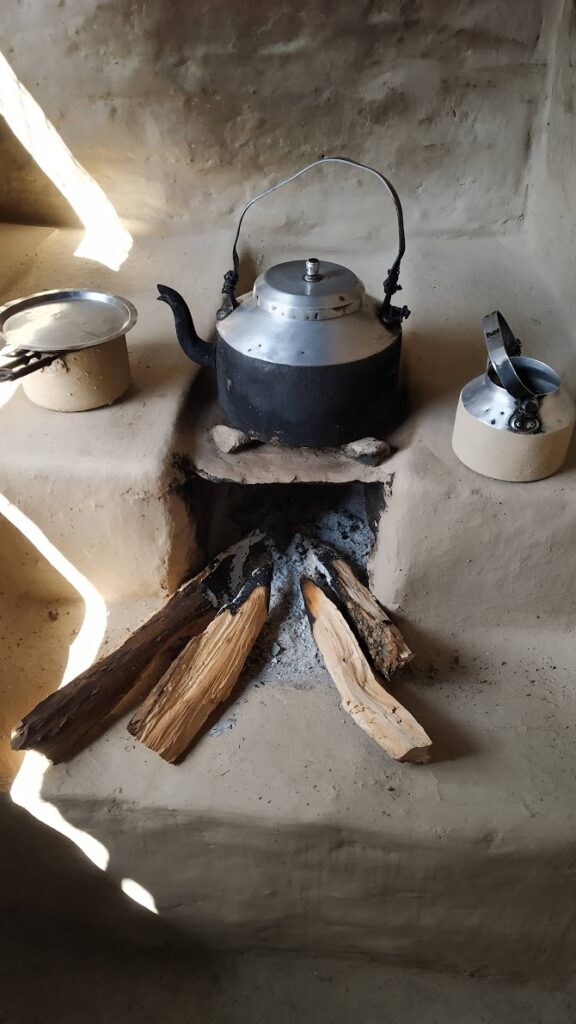
Building a rapport
I travelled the length and breadth of India for the last six years (hitting a pause during Covid) in search of people and organisations who were interested in learning how to make these efficient cookstoves. Girish Chanyal is one such individual. I met Chanyal in March 2022, when I set out to conduct our training programmes in collaboration with a friend, Purabi Sarkar (whose work supports many women’s groups and SHGs in this region). This workshop took place in picturesque Malan Charma in Pithoragarh.
Chanyal was one of the nine participants who had traveled from Chaukori to Malan to learn the skill of making improved mud cookstoves. The other eight participants were also from villages of Pithoragarh and were community enablers in their own fields. Over in-depth conversations with each of these participants, what emerged was a common narrative that life in the Himalayan region is tough, but the people are gritty and navigate adversities adeptly. I observed Chanyal’s behavior in the field. I only had to give him a set of instructions once, and allow him a degree of autonomy. Rest assured, the work would be done smoothly and efficiently.
His background, as a gardener in the only NGO – Himalayan Nari in his home village, Chaukori, was well suited to this work. His work involves growing and maintaining a stunning garden with fruits, vegetables and other plants together with a women’s group under the NGO roster. Hence, it became easy for him to understand the value and relevance of these cookstoves in the context of remote and marginalized Himalayan households. With a deep connection and understanding of soil, he took over mud mixing for our process. Assuming leadership came naturally to him. He started organising tasks for other participants too.
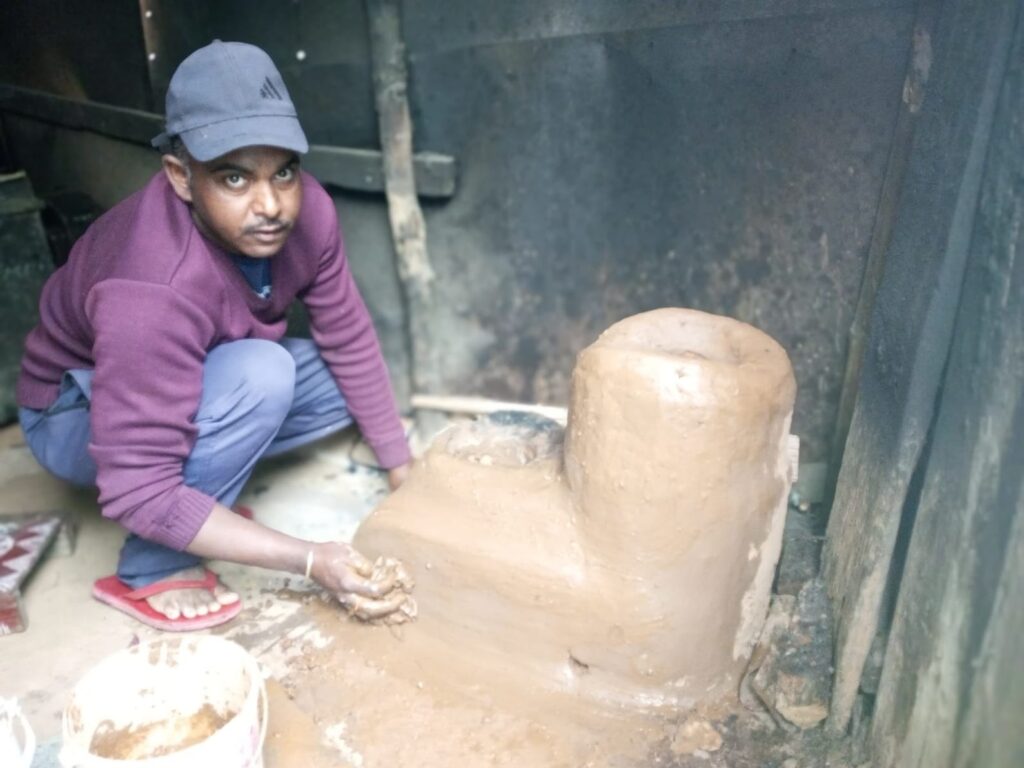
The process of making an improved mud stove
Making these improved mud cookstoves is a fairly simple process and anyone can learn this easily.
However, the key for them to be efficient is to follow the design principle of Rocket Stove Technology and a step-by-step process from mud mixing and stove installation to firing of the stoves and then maintenance. The fact that we use only locally available materials like mud, dry grass, rice puffs or an equivalent, cow dung and ash make it almost zero cost. The only element which is a one-time investment is the donut shaped metal mold. This is then used to make many mud donuts as building blocks for cookstoves.
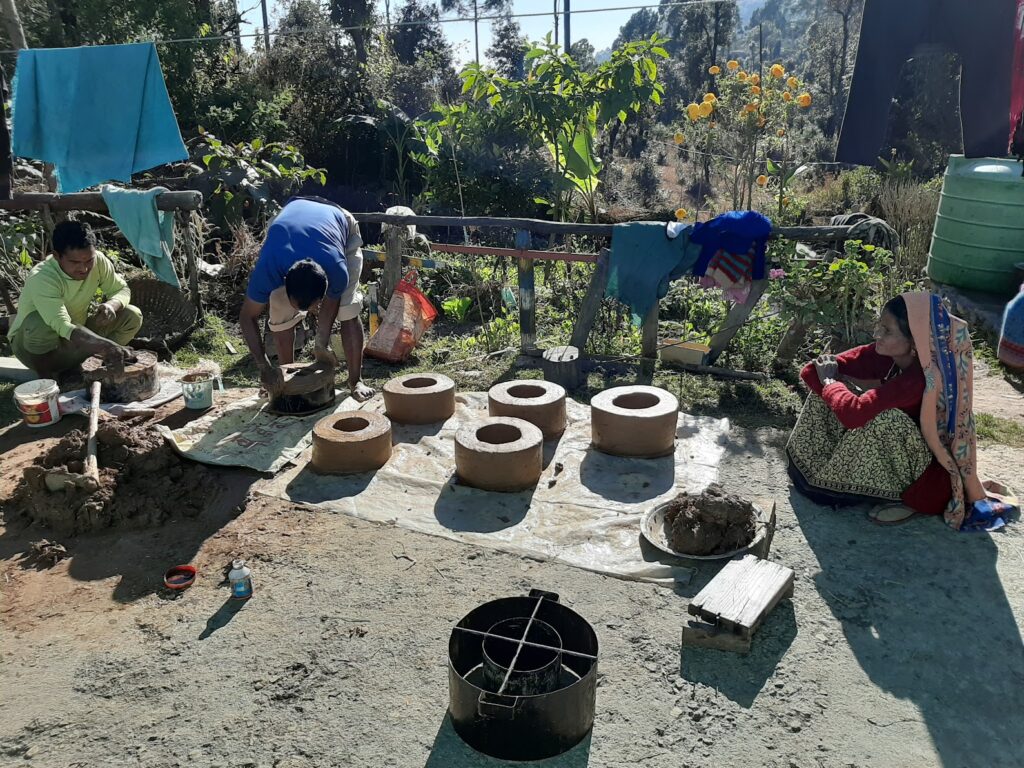
The physical design of the smokeless chulha stacks three full mud donuts to create a burn chamber. Bricks and half a mud donut create a fire-feeding tunnel. Both these structures have burners as openings and are joined together using the same mud mix as used in donuts. The dual pot design is a unique aspect of our mud cookstoves, as the user has to put the same bundle of wood to provide smokeless fire in both burner holes. This automatically reduces firewood usage as well as the time used for cooking.
The right partnership
For the SCF training programme, it is very crucial for us to select the right participant as they should find this solution as a way to reduce the drudgery related to cooking.
Our thought behind the community enablers’ training, a sort of ‘train the trainer’ model, is to transfer this skill to participants and then to develop various models based on their needs and time commitment. This opens up an opportunity for them to earn additional income.
Even Chanyal used a traditional chulha for his cooking and heating needs. He set out to build the improved cookstove immediately in his own house when he returned to his village, Chaukori.
Before the monsoons last year, he made about 20 smokeless chulhas in his village neighborhood. He made sure that he would keep sharing his videos of the stove installation for me to guide him through the process. Unfortunately, none of the other participants in the training took this project back to their villages, as they got caught up with life.
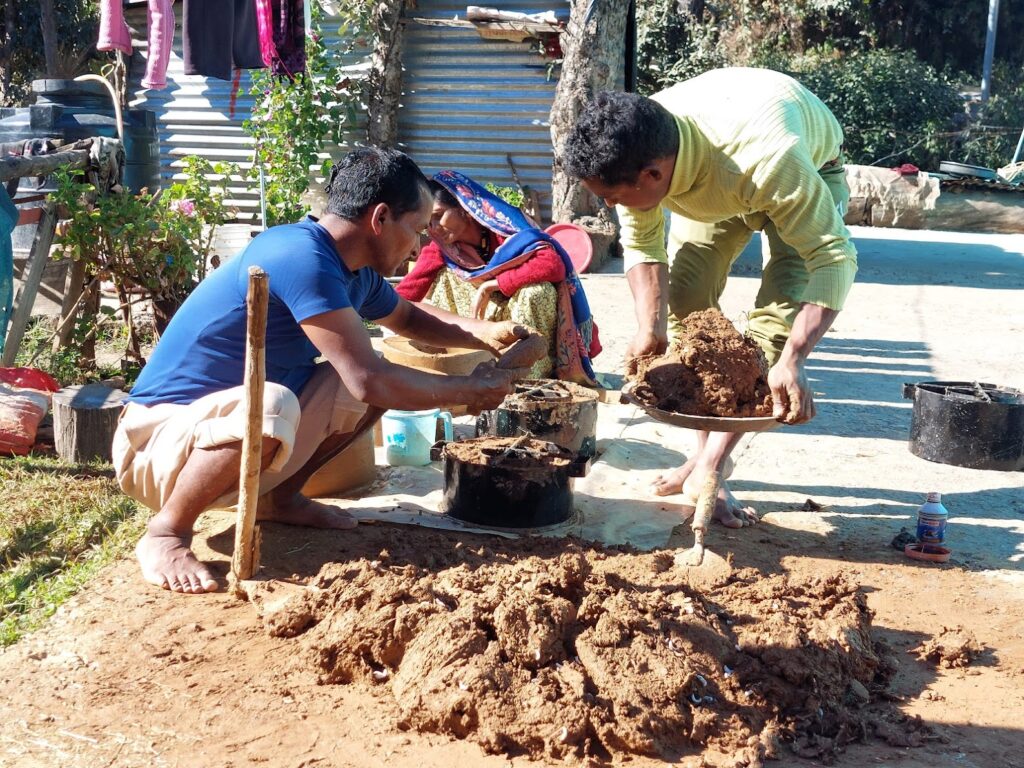
Levelling up
Chanyal experienced the difference this stove made in his own kitchen when he started saving more than 50% of firewood. He was keen to share this with his community. With the advantage of working with a women’s group, he started earning additional income through the stove installation process. We fixed a sliding rate between ₹500 to ₹1,200 for installing these stoves based on a household’s paying capacity, and whether it was being installed in a commercial establishment, such as a dhaba or a tea stall.
Our next phase of work was planned after the monsoons. Our second training programme took place in December 2022 with Chanyal as a lead trainer. I asked him to select the right community participants based on his understanding of the region. Allocating personal funds to this training programme, we supported his dedication with the thought of building a small team of SCF’s Rocket Stove makers in this area of Pithoragarh that could be potentially scaled.
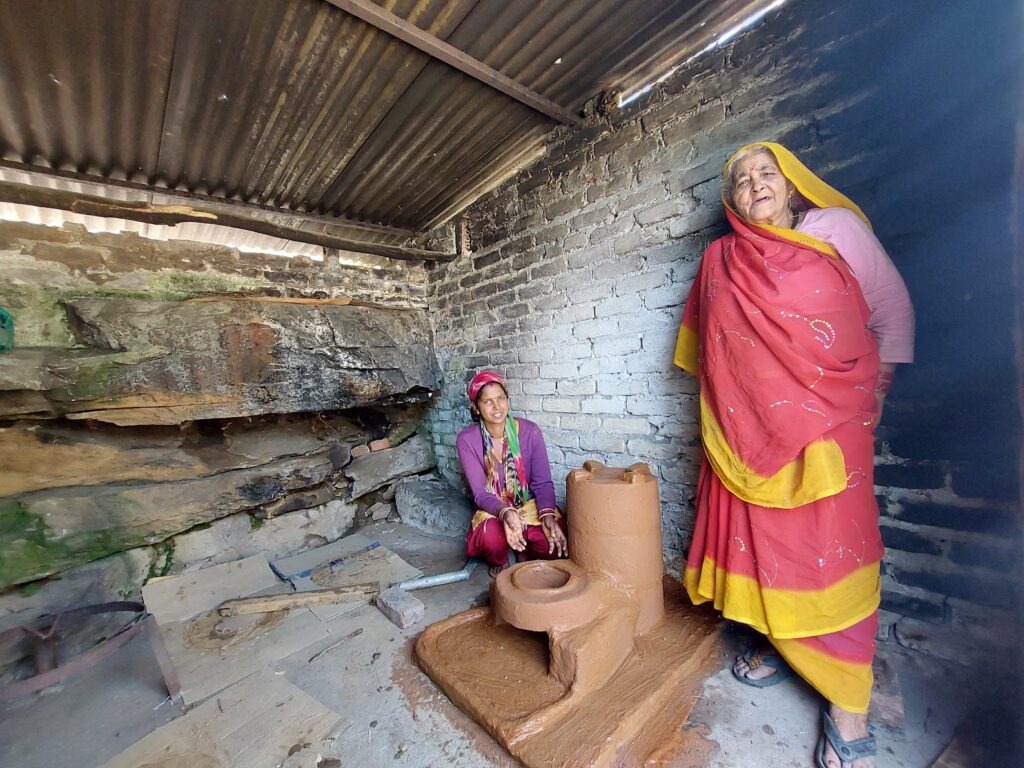
The training took place in his own backyard and the raw materials were collected from his garden. His family ensured all the participants were well-fed ( Chanyal is an excellent cook) and looked after. This is a unique aspect of Himalayan family dynamics, where men in the region are hands-on with domestic chores. It was like a home away from home for all participants, including me. The participants were all part-time MGNREGA workers whose lives were marked with inconsistency and unpredictability. They were happy to learn this skill and quickly made these stoves for their personal use.
Till date, under Chanyal’s guidance, the new cohorts have made over 50 improved mud stoves in Chaukori and its nearby villages. It gives me great pride to see him level up and SCF becoming a platform to teach how to make these improved cookstoves, helping people from various regions and backgrounds create their own path through it.
